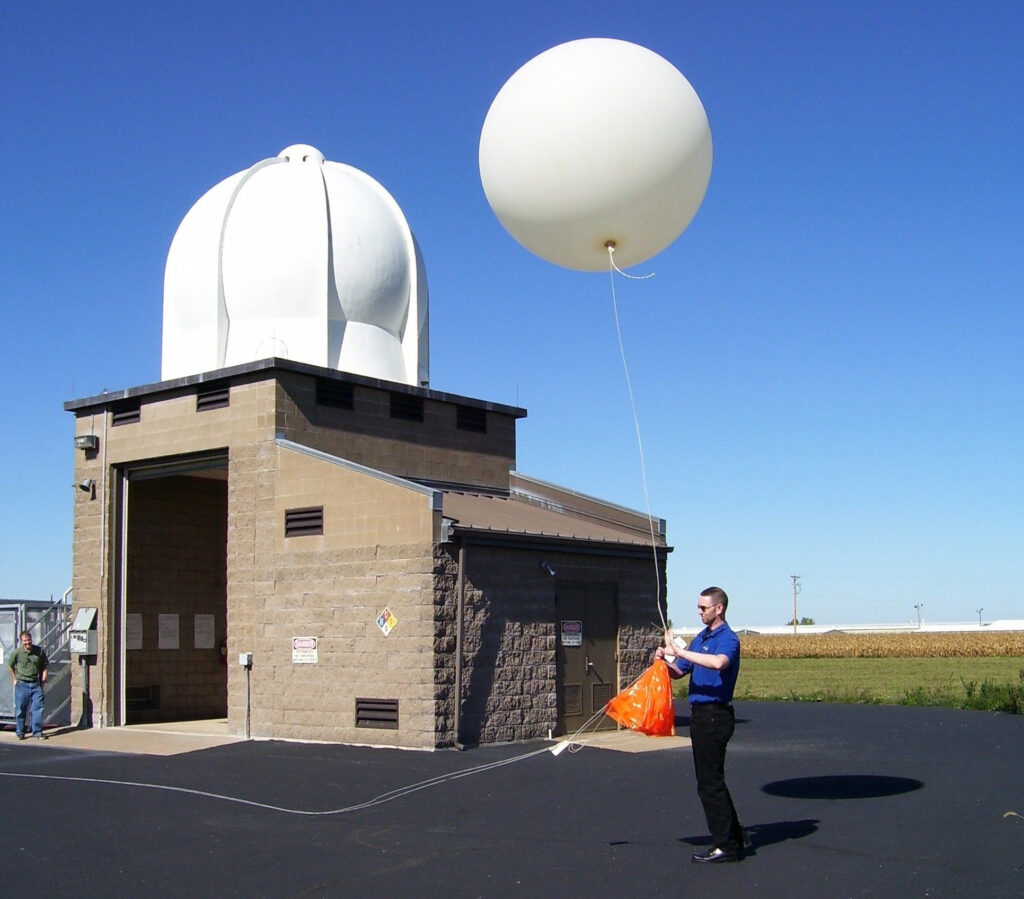By John Morales
The Trump regime’s chaotic approach to so-called efficiency in the federal workforce has wreaked havoc upon the National Weather Service and its parent agency, the National Oceanic and Atmospheric Administration.
NWS was already short staffed before the new administration came into power. Now hundreds more NOAA and NWS employees have been fired.
Running on skeleton crews, NWS offices in Alaska, New York and Maine can’t spare the man hours to launch their radiosondes. These instrument packages are attached to weather balloons that lift them through the lowest layer of the atmosphere, within which all the weather happens.

Data collected by the radiosondes feeds into weather models. On the days these atmospheric profiles go missing, weather forecast quality will suffer.
Balloon-launch gaps are only one example of critical meteorological information that is on track to go missing in 2025. Two flight directors and an electronic engineer from NOAA’s Hurricane Hunters were fired too. The flight directors’ job was to evaluate weather conditions in tropical cyclones to ensure the safety of the mission.
Now, some flights this hurricane season are in jeopardy because they may not have a flight director available. While the Air Force Reserve 53rd Weather Reconnaissance Squadron also flies into storms, any reduction in the combined number of NOAA and Air Force flights into fledgling tropical storms could lead to disaster.
This is no exaggeration. Two recent major disasters in Mexico came without warning because of the lack of hurricane hunter data: Hurricanes Otis in 2023 and John in 2024.
The data gaps resulted in Acapulco and nearby areas being devastated by storms that were first forecast to be relatively benign. Both Otis and John underwent rapid intensification that turned them from modest tropical storms into major destructive hurricanes in about a day.
I’m confident that National Hurricane Center forecasters suffered through some sleepless nights thinking of how just one more hurricane hunter flight may have saved lives. After all, NWS and its NHC branch are two of several U.S. government agencies that pursue the most noble of goals: to save lives.
In its mission statement, NWS states that it exists “for the protection of life and property and the enhancement of the national economy.” Weather can impact the economy in many ways, and when it becomes extreme, monetary losses can spread regionally to a majority of businesses.
The U.S. has sustained hundreds of weather and climate disasters since 1980 in which overall costs reached at least $1 billion. Added together, the total cost of these 403 events from 1980 to 2024 approaches $3 trillion
Yet when it comes to protecting the economy and our people from dangers like disease, environmental degradation and severe weather, the new administration has allowed the DOGE wrecking ball to swing wildly and indiscriminately.
Shortly after coming into power in January, the administration concocted a “deferred resignation” program to thin the federal ranks. According to the White House, about 75,000 federal employees signed up. That was followed in February by broad firings of federal workers during their probationary period — generally one or two years into their new jobs. As of March 7, more than 100,000 employees had been fired or offered buyouts.
Many of the fired civil servants were not new hires fresh out of college. I know of very experienced and valuable NOAA employees that were two decades into their careers but had recently been promoted. Because every government promotion comes with probationary status, they’ve now lost their jobs.
Or have they?

Part of the chaos we’re living through is that the president and advisers — maybe deliberately — can’t seem to make up their minds. The second weekend in March, the termination of probationary staff at NWS was apparently rescinded. At the same time, it was reported that NOAA needs to prepare for another round of firings that would lead to the loss of another 1,000 workers.
We can’t lose sight of the fact that the dismantling of NOAA is an integral part of Project 2025 because, according to the Heritage Foundation, it is a source of “climate alarmism.”
All signs point to the dismemberment of the national meteorological and hydrological service which had been the envy of the world. NOAA and NWS staff are already spread thin and demoralized. The ability to observe, forecast and warn of impactful weather is being degraded. This is putting American lives and the American economy in danger.
I may be known for my hurricane acumen, but I cannot do my job without NOAA. I may be the voice of reason in a storm, but the NWS serves as my vocal cords. The American public needs to relentlessly continue contacting their elected representatives to save NOAA and NWS, and more broadly, to save science, which is under siege in this country.
Because without the National Weather Service, there is no Jim Cantore, no Al Roker and no John Morales.
John Morales is the hurricane specialist for NBC 6 in Miami and the longest-tenured weathercaster in South Florida. A longer version of this piece was originally published by the Bulletin of Atomic Scientists at https://thebulletin.org/2025/03/hurricane-elon-doge-cuts-could-cause-meteorologists-to-miss-the-next-nightmare-storm/. Banner photo: An image captured on a NOAA satellite of Hurricane Milton approaching the Gulf Coast of Florida (NOAA).
Sign up for The Invading Sea newsletter by visiting here. To support The Invading Sea, click here to make a donation. If you are interested in submitting an opinion piece to The Invading Sea, email Editor Nathan Crabbe at nc*****@*au.edu.



